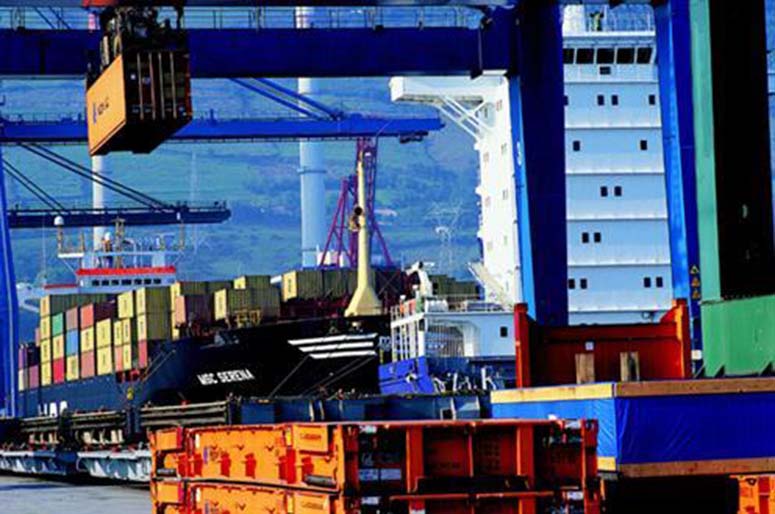In the period January-September, Spanish exports of goods grew by 9.1% compared with the same period of the previous year, amounting to 205.56 billion euros, an all-time cumulative high for the period.
Imports increased by 11.1% to 224.12 billion euros. Consequently, the trade deficit for the first nine months of the year amounted to 18.56 billion euros, 40.3% higher than the figure posted in the same period of 2016. It is the third best cumulative balance recorded for the first nine months of the year since 1997, only bettered in 2013 and 2016. Spanish exports continue to outperform those of the Eurozone and the European Union as a whole.
The coverage rate – exports over imports – stood at 91.7% (93.4% in January-September 2016). This is also the third best figure in the historical series. In volume terms, exports rose by 8.6%, since prices calculated by Unit Value Indices increased by 0.4%, and imports grew in volume by 5.6%, also due to prices having increased, this time by 5.2%.
The non-energy balance posted a deficit of 2.56 billion euros (compared with a deficit of 1.18 billion euros in the nine months to September 2016), and the energy deficit grew by 32.8% to 16.01 billion euros (versus a deficit of 12.05 billion euros in 2016).
The growth of Spanish exports between January and September is higher than that of Spain’s neighbours: in the Eurozone exports grew by 7.4% and in the European Union by 7.7%. Spain’s export growth also outperforms that of Italy (7.3%), Germany (6.3%), and France (3.8%), as well as the USA (6.2%) and China (5.5%). Exports from UK grew faster (17.6%), as did Japan’s (11.3%).
The main industrial sectors all posted export growth with the exception of the automotive sector: capital goods (accounting for 20.4% of the total) grew by 10.5%; food, drink and tobacco (16.6% of the total) grew by 7.3%, and non-chemical manufactures (10.2% of the total) grew by 9%. Meanwhile, the automotive sector (16.3% of the total) shrank by 0.8%, particularly due to lower sales to the UK and Turkey.
The growth of imports is mainly due to higher energy product prices and the consolidation of Spain’s economic recovery. Imports of capital goods (21.4% of the total) increased by 10%, energy products (13.2% of the total) by 41.7%, and chemical products (15% of the total) by 4.7%.
Exports to the EU (65.9% of the total) grew by 8.1% in the first nine months of the year. Sales to the Eurozone (51.7% of the total) increased by 9% while those to the rest of the EU (14.2% of the total) increased by 4.9%.
In sales to third country destinations (34.1% of the total), the scenario was even more dynamic. These exports increased by 11% in the period, with strong export growth recorded to Oceania (28.2%), Latin America (13.5%), Africa (11.5%), Asia excluding the Middle East (11%) and North America (10.4%). Only exports to the Middle East (up by 0.1%) showed more moderate growth. By country, we would highlight the increase of sales to markets with a high potential such as China (23.8%), Morocco (18.9%), Mexico (14.7%), the USA (10.6%), and Canada (9.9%), while exports to Saudi Arabia (-5.9%) and Algeria (-10.6%) shrank.
The autonomous regions with the strongest export growth were the Balearic Islands (96.1%), the Canary Islands (29.9%) and Asturias (24.4%). In contrast, the biggest drops were posted by Navarre (-5.6%), Castile and Leon (-3.2%) and Cantabria (-2.6%).
September’s figures
In September, Spanish exports of goods grew by 8.5% compared with the same month of 2016 to 23.26 billion euros. Imports increased by 7.4% in year-on-year terms to 25.41 billion euros. Consequently, a deficit of 2.15 billion euros was posted, 3.7% lower than in the same month of 2016. The coverage rate stood at 91.5%, one percentage point higher than in September 2016.
The non-energy balance posted a deficit of 836 million euros (versus a deficit of 1.02 billion euros in September 2016) and the energy deficit grew by 8.5%.
Spain’ export growth in September (8.5%) was higher than either the Eurozone’s (5.3%) or the European Union’s (5.4%).
In September, the main contributions to export growth were made by the capital goods sector (a contribution of 4 points), energy products (2.9 points), and non-chemical manufactures (0.7 points). In contrast, the sectors that made the most negative contributions were other goods (-0.4 points) and the automotive sector (-0.3 points).
In September, 2017, exports to the European Union accounted for 67% of the total (67.6% in September 2016) and increased by 7.5%. Exports to the Eurozone grew by 9.5%, while those to the rest of the EU increased by 0.3%. Among our main trade partners we would highlight export growth to Germany (21.2%), Italy (4.2%) and France (3.7%), while sales to the UK scarcely increased (0.7%).
The full report may be found on this website: www.mineco.es





